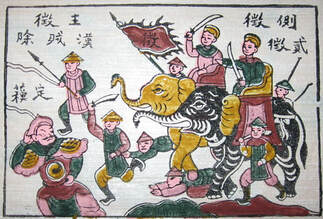
Note: In Vietnam, as with most Asians, the surname/ family name goes first: Trưng. The first name is written last.
Image Credit: Painting by Bac Ninh ▲ ▼ Map of Current Republic of Vietnam
Image source: en.wikipedia.org/Trung_sisters'_rebellion Image Source: https://en.wikipedia.org/wiki/Sino-Vietnamese_War
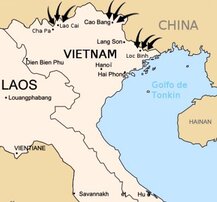
To give the reader an idea of where this story took place, the map shows the current Republic of Vietnam and the adjacent part of China. In 40 AD there was no country called Vietnam but many districts of kingdoms. References used herein to current geographical terms are for ease of understanding.
The arrows at the top are routes used by the Chinese to invade in 1979. The center set of arrows depicts the general area of where the Nanyue existed in 40 AD.
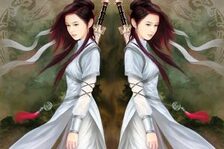
The Trưng sisters were born around 12 and 14 AD into a military family in a rural village, Giao Chi, in what is now northern Vietnam. Although their birth dates are unknown, Trắc was the eldest. Nhị, the younger by a few years. Their father, being a prefect of Mê Linh [now a rural district of Hanoi] made sure they grew up well-trained in the martial arts, the art and strategies of warfare, and physical combat. Both were in line to inherit their father's land and titles. In addition, they were highly educated in all other subjects.
Without going into detail about the long history of the area, Nanyue was part of the Trieue dynasty. The Chinese Emperor Wu of Han sent troops in 111 BC to annex the territory of Nanyue and surrounding districts. Under the Han Chinese, the new rulers imposed political and cultural control over the territory and assigned governors to oversee existing local leadership.
This was the environment in which the Trưng sisters grew up, and they were well aware of the cruel treatment of the Viets by the Chinese overlords. Much friction was caused by the Vietnamese social structure based on a more equal status between the sexes. Unlike those in China, women in Vietnam could serve as judges, soldiers, and even rulers and had equal rights to inherit land and other property.
THE REBELLION
Trưng Trắc was probably still a teenager when she fell in love and married Thi Sách, the son of another prefect and young district chief and nobleman. Together with sister Nhi, husband and wife outwardly protested Chinese rule and secretly plotted to overthrow the invaders.
Trưng Trắc was described as having “a brave and fearless disposition,” and Chinese records claim that Thi Sách followed his wife’s decisions, not the other way around. It is thought that the teen sisters were in charge of recruiting Vietnamese lords to fight in a rebellion. When the Chinese governor discovered their plan, he brutally executed Trac’s husband, hanging his body from the city’s gate as a warning to the rebels.
Another version of the story tells about how Thi Sach, in 39 AD, lodged a formal protest to the governor about increasing tax rates. As a result, the Chinese governor executed Thi Sach. It’s not impossible that this action might have been part of the three’s plan to overthrow the Chinese.
The governor may have expected Trắc, the young widow, to go into seclusion as would a Chinese woman, but he was sadly mistaken. Instead, she and her younger sister raised an army of 80,000, many of them women, and launched a rebellion against the Chinese. Within months, they took about 65 cities from the Chinese and liberated Nanyue after 150 years of Chinese rule.
Image source: ancient-origins.net/history/trung-sister-freedom-fighters
After expelling the governor who killed her husband, Queen Trưng Trắc ruled for three years. She was strong and intelligent. During the three year reign, the sister traveled about the region on their battle elephants, endeavoring to keep their troops trained and well-motivated. Image Credit: Gwen Stiria
Image Source: wattpad.com/453708183-female-warriors
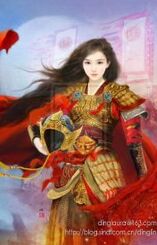
In her third year as queen, Trưng Trắc became aware the Chinese were preparing to retake Nanyue. In the spring of 43 AD, Chinese General Ma Yuan left Han with a hugh army which followed the coastline and entered the Sui Mountains. Ma and his forces traveled over 310 miles to reach Lãng Bạc. There the Chinese battled with the queen’s forces.
Trưng Trắc realized the Chinese army was much larger than hers. She considered her own forces to be less well-trained and feared it could not stand against General Ma. Therefore, she withdrew to Jin River. Her followers thought the queen, being a woman, could not be victorious and deserted her and her sister.
DEFEAT AND DEATH
The accounts of the sisters’ deaths vary enough to fall into legend rather than history. The Trưng sisters were defeated in battle in 43 AD. The Chinese and Vietnamese records about their fate vary a bit.
One report is that the Trưng sisters were killed by Ma Yuan, presumably in battle. Another version from a different source reports that they died fighting after the other rebels deserted them. The Book of the Later Han indicates they were beheaded by the Chinese General who sent their severed heads back to the Han leaders. The other recorded version is that they committed suicide.
There are less likely legends claiming the sisters fell sick, vanished in the sky, or took their own lives by jumping into a river and drowning. According to one legendary account, when they were finally overwhelmed by the enemy armies, Trắc and Nhi threw themselves into the Hat Giang River in order to avoid capture. They then turned into statues. These eventually washed ashore and were placed in Hanoi's Hai Ba Trung Temple for worship.
In short, Queen Trưng Trắc and her sister Nhi died in this battle, or as the result of it, and that ended their rule and independence for the northern area of Vietnam.
“The Trưng sisters' rebellion marked a brilliant epoch for women in ancient southern China and reflected the important of women in early Vietnamese society. One reason for the defeat is the desertion by rebels because they did not believe they could win under a woman's leadership. The fact that women were in charge was blamed as a reason for the defeat by historical Vietnamese texts.
Vietnamese historians were ridiculing and mocking men for the fact that they did nothing while "mere girls", whom they viewed with revulsion, took up the banner of revolt-the Vietnamese poem which talked about the revolt of the Trung Sisters while the men did nothing was not intended to praise women nor view war as women's work as it has been wrongly interpreted.” https://en.wikipedia.org/wiki/Trung_sisters%27_rebellion
NOT FORGOTTEN
Even though these events took place nearly 2000 years ago, and despite how the men felt about women fighting, the Trưng sisters and their contribution to the homeland are not forgotten. Not only are there temples and statues to honor them, but their accomplishments are celebrated annually in February to commemorate their deaths.
Image Source: connectedwomen.co/the-trung-sisisters

□
Image ource: en.wikipedia.org/wiki/Tr_sisters
Note 1: The Indian Elephant is native to mainland Asia, including India, Nepal, Bangladesh, Bhutan, Myanmar, Thailand, Malay Peninsula, Laos, China, Cambodia, and Vietnam. It is regionally extinct in Pakistan. The Indian elephant appears frequently in ancient Asian art and legends. Elephants are present in almost all narratives of battles in ancient Asia.
Note 2: The popular saying, "When the enemy is at the gate, the women go out fighting" often has been cited as evidence of women's stature. The actual phrase in Vietnamese is "Giặc đến nhà, đàn bà cũng đánh" which means literally “When the enemy troops came to the house, the woman also went to fight the enemy.” It is intended to mean that fighting in war is inappropriate for women and that it is only when the situation is so desperate that war has spread to their home that women should enter the war.
Sources:
https://en.wikipedia.org/wiki/Trung_sisters'_rebellion#/media/File:Hai_ba_trung_Dong_Ho_painting.jpg
https://en.wikipedia.org/wiki/Tr%C6%B0ng_Sisters
https://www.thevintagenews.com/2016/12/20/the-trung-sisters-the-national-heroines-of-vietnam-who-successfully-repelled-a-chinese-invasion-for-three-years/#:~:text=The%20sisters%20represent%20Vietnam%E2%80%99s%20independence%20and%20they%20are,are%20powerfu
https://www.thoughtco.com/trung-sisters-heroes-of-vietnam-195780
https://www.britannica.com/topic/trung-sisters
http://www.newworldencyclopedia.org/entry/Tr%C6%B0ng_Sisters
https://en.wikipedia.org/wiki/Tr%C6%B0ng_Sisters
http://www.hoangthanhthanglong.vn/blog/chuyen-ke-ve-hai-ba-trung/458
https://en.wikipedia.org/wiki/Trung_sisters'_rebellion#/media/File:Hai_ba_trung_Dong_Ho_painting.jpg
http://hanoimoi.com.vn/Ban-in/Van-hoa/641952/nha-hat-cheo-ha-noi-cong-dien-vo-vuong-nu-me-linhhttp://hanoimoi.com.vn/Ban-in/Van-hoa/641952/nha-hat-cheo-ha-noi-cong-dien-vo-vuong-nu-me-linh
https://beyondword.com/blogs/beyond-words-blog/the-trung-sisters
https://www.wattpad.com/453708183-female-warriors-tr%C6%B0ng-tr%E1%BA%AFc-tr%C6%B0ng-nh%E1%BB%8B
https://www.ancient-origins.net/history-famous-people/hell-hath-no-fury-trung-sister-freedom-fighters-002199
https://www.connectedwomen.co/magazine/herstory-the-trung-sisters-brave-heroines-of-vietnamese-history/
https://commons.wikimedia.org/wiki/File:T%C6%B0%E1%BB%A3ng_Hai_B%C3%A0_Tr%C6%B0ng_%E1%BB%9F_Su%E1%BB%91i_Ti%C3%AAn.JPG
http://www.vnhelp.org/blog/celebrating-international-womens-history-with-the-trung-sisters/
https://en.wikipedia.org/wiki/Trung_sisters'_rebellion#/media/File:Hai_ba_trung_Dong_Ho_painting.jpg
https://en.wikipedia.org/wiki/Han_conquest_of_Nanyue
https://www.thevintagenews.com/2016/12/20/the-trung-sisters-the-national-heroines-of-vietnam-who-successfully-repelled-a-chinese-invasion-for-three-years/#:~:text=The%20sisters%20represent%20Vietnam%E2%80%99s%20independence%20and%20they%20are,are%20powerfu
https://en.wikipedia.org/wiki/Sino-Vietnamese_War
https://theculturetrip.com/asia/vietnam/articles/hai-ba-trung-the-story-of-vietnams-elephant-riding-warrior-princesses/\
https://taobabe.rocks/the-trung-sisters-part-4/
https://www.augustman.com/my/travel/trung-sisters-vietnams-famous-heroines/
https://www.sahapedia.org/asian-elephants-history-and-culture-overview
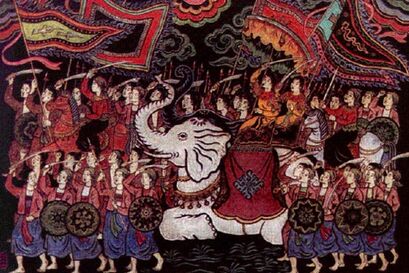
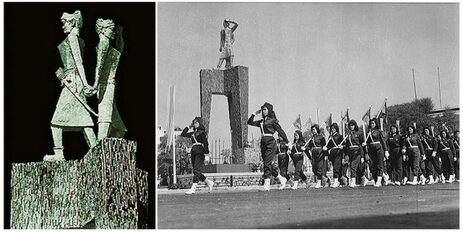
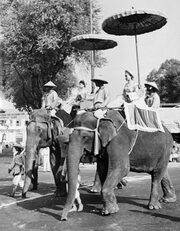
 RSS Feed
RSS Feed